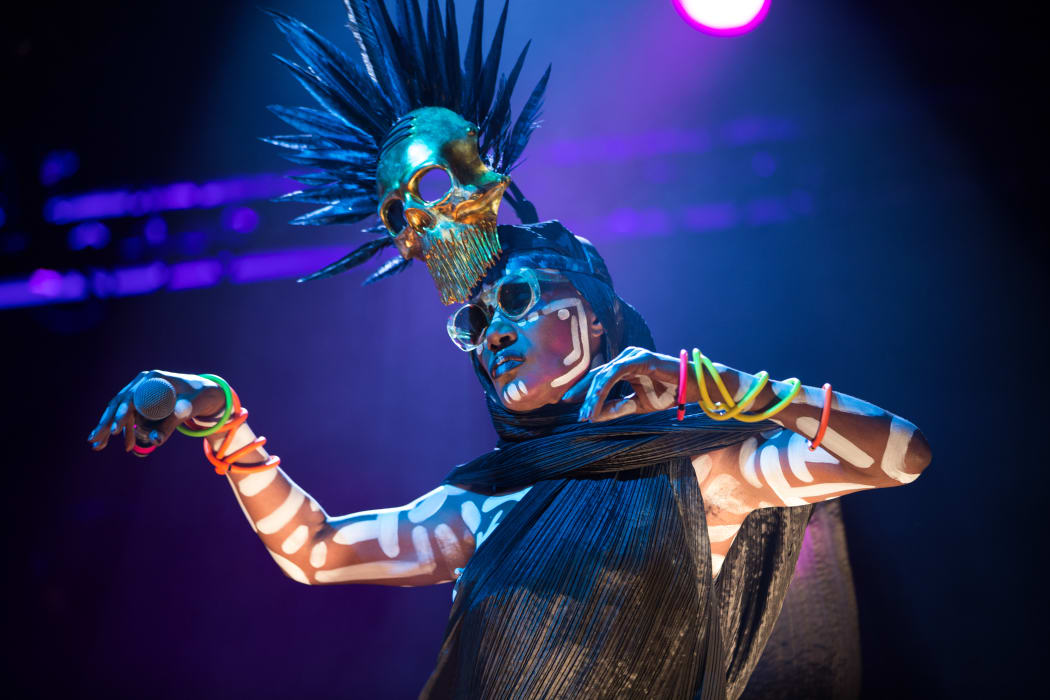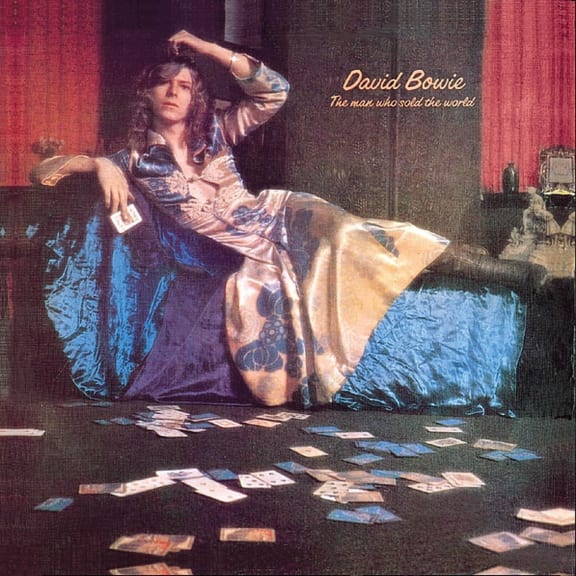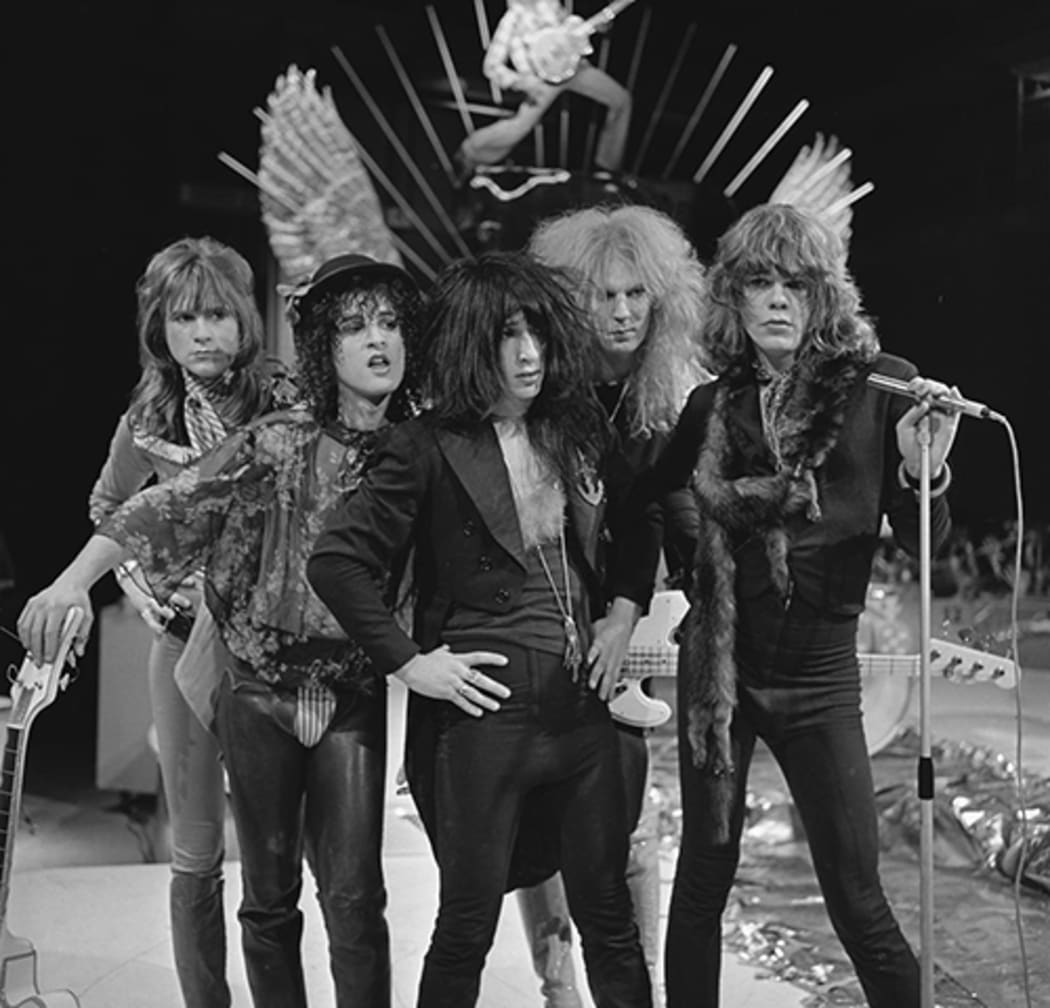Popular culture is a place that has always given room to push boundaries, and pop music in particular has been bending gender since Little Richard in the 1950s.

Grace Jones at Auckland City Limits. Photo: RNZ / Cole Eastham-Farrelly
Geoff Stahl teaches popular music studies at the school of English, Film, Theatre and Media studies at Victoria University.
"Pop music is often where the revolution starts," Stahl says. "It's a space where things can be anticipated. The sexual revolution of the 1960s was all bound up with what's going on in pop music."
David Bowie was at the forefront of androgyny in pop music.

Photo: Wikicommons
"Bowie opened that up through style, through his chameleon like career he just expanded the horizons of what it was to be a rock star."
Bowie's 1970 album The Man Who Sold the World showed him in a dress, with locks tumbling down his shoulders and reclined on a chaise longue.
"This is an album where he's beginning to experiment with heavy metal and hard rock and it seems quite contradictory at some level.
"Here you have an album kind of informed by the revival of the blues at a time when Black Sabbath and co were also releasing material. So there's this quite heavy hard sound and here's this man in a dress," Stahl says.
In the early 1970s The New York Dolls had a cult following and are regarded as a proto-punk band. Their sound was hard, but they dressed glam.

New York Dolls Photo: Wikicommons
"Their legacy is as a cult band rather than one that had hits. Their music anticipates punk in some ways, but stylistically these are men clearly dressed up in women's gear and wearing make-up."
The Dolls, while playing with gender, as did more famous contemporaries like Roxy Music, were a little "rougher around the edges".
There's no doubt that these are men, it's a kind of cock rock that's at one level different than what you get with say Led Zeppelin. It's style, but also a bit of a political gesture."
Klaus Nomi was an other-worldly figure on the New York underground scene of the 1970s. He had a countertenor voice that was equally at home with the slightest of pop tunes or opera.
His look was distinctive - a kind of kabuki-faced alien. Echoes of his look and style could be seen in the New Romantics of the early 1980s.
Punk and New Wave opened up a space for women.
Annie Lennox had a famously androgynous look - particularly in this video.
Prince isn't necessarily an artist you might associate with androgyny, but Stahl says he played with gender, particularly notions of black masculinity, in a very sly way.
"He plays with masculinity, but he's also playing with black masculinity. He does it in a way that's a nod and a wink, it's erotic and very much a part of who he is."
Songs played:
Barbarians 'Are You a Boy or Are You a Girl?'
David Bowie 'The Man Who Sold the World'
New York Dolls 'Trash'
Klaus Nomi 'Simple Man'
Eurythmics 'Sweet Dreams'
Prince 'I Would Die 4 U'
Grace Jones 'Me I Disconnect from You'

